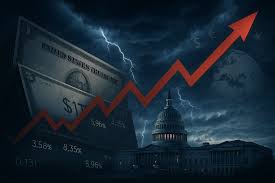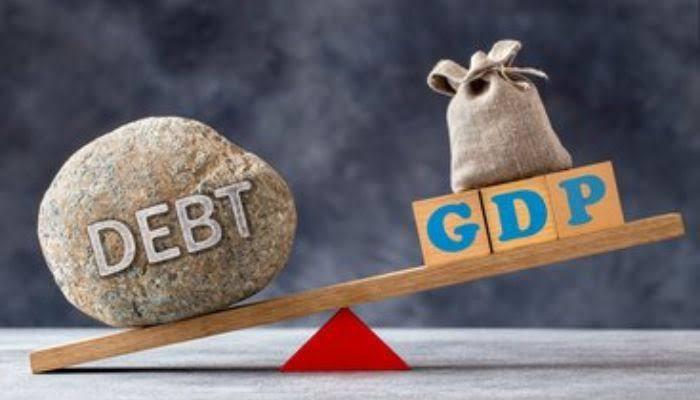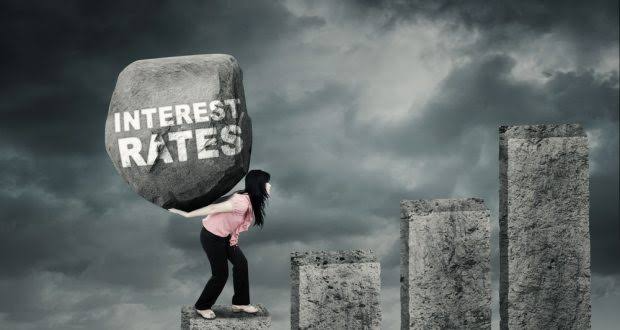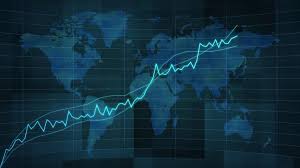How Soaring Debt Is Undermining the "Strong" U.S. Consumer

The American consumer is often hailed as the unwavering engine of the U.S. economy. By many traditional metrics robust spending, a low unemployment rate, and a generally optimistic outlook that engine appears to be humming along, powering the nation through a period of economic uncertainty.
However, a closer look at household balance sheets reveals a different, far more precarious story. Hiding in plain sight, U.S. credit card debt has soared to record highs, a ticking time bomb of financial fragility that threatens to derail the very engine it is supposed to be powering.
The Shocking Numbers: A Debt-Driven Reality

Source: Google
The scale and urgency of the problem are laid bare in the data. According to the Federal Reserve Bank of New York, as of the fourth quarter of 2024, Americans held a record-high of $1.21 trillion in credit card debt. This figure is not a slow, steady climb but a rapid and alarming increase, with balances jumping by $45 billion in just one quarter.
This growth isn't a one-off event; it is part of a trend that has seen total card balances rise to a series high since data collection began in 2012, Even more concerning than the total balance is the rising rate of delinquency.
Aggregate delinquency rates have been on an upward trajectory, surpassing pre-pandemic levels. While a small percentage increase might seem insignificant, it represents millions of American households falling behind on payments.
This financial distress is particularly concentrated among lower-income individuals and younger borrowers, a clear indication that the burden of this debt is not shared equally but is instead a reflection of widening economic inequality.
The average household with revolving credit card debt is carrying a balance of over $10,500, a figure that is becoming a crushing weight for a significant portion of the population. This isn't just about debt; it’s about a new class of financially fragile households being created in real time.
The "Why" Behind the Debt: More Than a Spending Problem

Source:Google
A common misconception is that the soaring credit card debt is a result of lavish spending on luxury goods and extravagant vacations. The human reality behind the numbers tells different story. Credit card debt is increasingly being used as a lifeline, a necessary coping mechanism to bridge the gap between stagnant wages and the relentless rise in the cost of living.
Through a combination of economic analysis and personal anecdotes, it becomes clear that this debt is being used for necessities. A 2025 Bankrate report revealed that nearly half of American credit cardholders cite emergency and day-to-day expenses as the primary reason for their debt.
This includes things that are non-negotiable for a functioning life: car repairs, medical bills, home repairs, and, most tellingly, daily expenses like groceries, childcare, and utilities. Inflation has shrunk the financial margin for error from slim to non-existent for many families.
When the price of basic goods and services rises faster than a family's income, they have to turn somewhere to make ends meet. For millions of Americans, that "somewhere" is a high-interest credit card. The reliance on credit is not a choice made for lifestyle upgrades; it's a forced decision made for survival.
The Interest Rate Squeeze: A Cycle of Impossibility

Source: Google
The precariousness of this situation is exacerbated by the critical role of rising interest rates. The Federal Reserve's battle against inflation has led to a significant increase in the prime rate, which directly impacts the interest rates on credit cards.
As of mid-2025, the average credit card APR (Annual Percentage Rate) for accounts accruing interest was well above 22%. This is a punishing rate that makes it nearly impossible for individuals to pay down their balances.
The math is brutal. For someone with a significant balance, the minimum payment they make each month is often just enough to cover the interest, with very little left over to reduce the principal. This traps millions of Americans in a cycle of debt that is a spiral of despair.
A small unexpected expense, such as a medical bill or a car repair, can now push a household over the edge, as it forces them to take on more debt at an unsustainable rate. The average time it takes to pay off a substantial credit card balance has ballooned, transforming a short-term financial fix into a multi-year burden that erodes a family's ability to save, invest, or plan for the future.
The Economic Ripple Effect: A Headwind to Growth
This level of household debt is not just a personal problem; it poses a serious threat to the broader macroeconomic stability of the United States. High household debt acts as a powerful headwind to future consumption, which is a key driver of economic growth.
As a greater portion of a household's income is allocated to debt servicing, paying interest and making minimum payments less money is available for discretionary spending on goods and services. This could cool economic activity and exacerbate a future downturn.
The implications for the financial sector are also significant. A widespread increase in delinquencies and defaults on credit card balances could strain financial institutions, leading to a tightening of credit and potentially even destabilizing the banking system.
The financial crisis of 2008 demonstrated how interconnected the economy is and how a crisis in one sector, like subprime mortgages, can have a ripple effect that threatens the entire system. While credit card debt is not the same as the mortgage crisis, the sheer scale of the debt and the rate of delinquency are a cause for serious concern.
The health of the American consumer is intrinsically linked to the health of the American economy. If a substantial portion of the population is buried in debt, their ability to drive future growth is severely diminished.
A Call for Systemic Solutions.
Addressing this debt crisis requires a move beyond individual financial literacy and a focus on systemic solutions. It is not enough to tell people to "budget better" when their wages are not keeping pace with the cost of survival.
Policy considerations must be at the forefront of the conversation. A growing number of policymakers are proposing a cap on credit card interest rates, arguing that the exorbitant APRs are predatory and are trapping people in a cycle of debt that is nearly impossible to escape.
A recent analysis from the Vanderbilt Policy Accelerator found that an 18% cap on credit card interest rates could save Americans billions of dollars annually without reducing access to credit. This is a bipartisan issue, with proposals for rate caps gaining traction on both sides of the aisle.
Beyond policy, employers also have a critical role to play, By offering financial wellness programs, providing living wages, and implementing transparent compensation models, businesses can help their employees build a more stable financial foundation, reducing the need for credit card reliance. Addressing the rising cost of living through broader economic policies that tackle inflation and housing shortages is also a key part of any long-term solution.
Addressing this debt crisis is not just a matter of social justice, but an economic necessity for maintaining the health of the American consumer and the stability of the entire economy. It's time to pull back the curtain on the myth of the "strong" consumer and confront the hidden vulnerability that threatens to undo the nation's financial progress.
You may also like...
The Day Nigeria Fell in Love With Fuel Scarcity

How Nigeria turned fuel scarcity into a strange national tradition of endurance, humour, and survival. A satirical yet s...
Terraforming Mars: Dream, Delusion, or the Next Frontier?

Can we really turn Mars into a second Earth, or are we chasing a dangerous dream while neglecting our own planet? It’s t...
When Love Letters Were Real: Before Relationships Became Content

Before likes and DMs defined affection, love in Africa was handwritten, raw, and real. This piece revisits the lost art ...
Rangers Eye Steven Gerrard for Managerial Return Following Russell Martin Exit

Steven Gerrard is the leading candidate to replace Russell Martin as Rangers manager, with reports suggesting the club i...
Ray Winstone Reveals Epic Drunken Star Wars Audition Fail

Ray Winstone shares a candid account of his disastrous “Star Wars” audition for Padmé Amidala's father, admitting he was...
Hollywood Icon Nancylee Myatt, TV Creator, Dies at 68

Nancylee Myatt, an Emmy-winning television writer and producer known for creating NBC's "Social Studies" and her work on...
Zach Bryan Ignites Firestorm: Artist Defends 'Misconstrued' ICE Song Amidst Public Outcry

Zach Bryan clarified the controversy surrounding a recent song snippet, asserting his lyrics about police and ICE were "...
SEVENTEEN Duo Unlocks 'HYPE VIBES': S.Coups & Mingyu Reveal Their Most Authentic Album Yet

K-pop powerhouse SEVENTEEN continues to expand its musical horizons with the debut of its new unit, CxM, featuring S.Cou...




